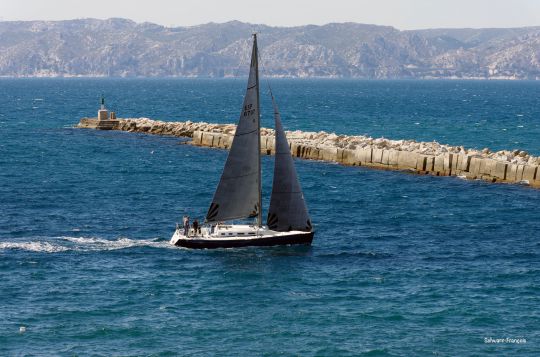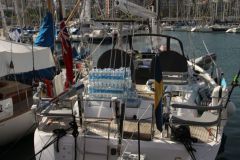Most sailboats are fiery
A fiery sailboat is said to have a natural tendency to luff, i.e. to move closer to the wind. At certain points of sail, such as upwind or close-hauled, most sailboats will tend to turn into the wind, i.e. the helm will pull to the windward side.
In the same way, when you let go of the helm while sailing, it will naturally turn to face the wind (headwind).
The boat is more or less fiery depending on the wind strength. The stronger the wind, the more fiery the boat is. This requires constant play with the helm to keep the boat on course. It will therefore require more effort to keep the boat on course.
The heel also influences a fiery sailboat. The more it heels, the more it will tend to luff. In case of uncontrolled deviation, we speak of a luffing departure.
How to do it?
On a fiery sailboat, the center of sail is aft of the centerboard. This means that there is too much power at the back of the boat. You must then reduce the back sail in relation to the front sail. You can take a reef for example. You can also adjust the mainsail by reducing the mast rake for example or on the contrary make the headsails more powerful.

The opposite, a soft sailboat
Conversely, a boat that will tend to move away from the wind's axis - to go downwind - is called a soft boat. A soft boat is not very pleasant to steer, offering little sensation.
How to do it?
On a soft sailboat, the center of sail is ahead of the center of the daggerboard. For example, you can reduce the headsails to re-center the sail center. You can also give back some rake by taking back the shrouds or the backstay and letting go of the forestay.

 /
/ 













